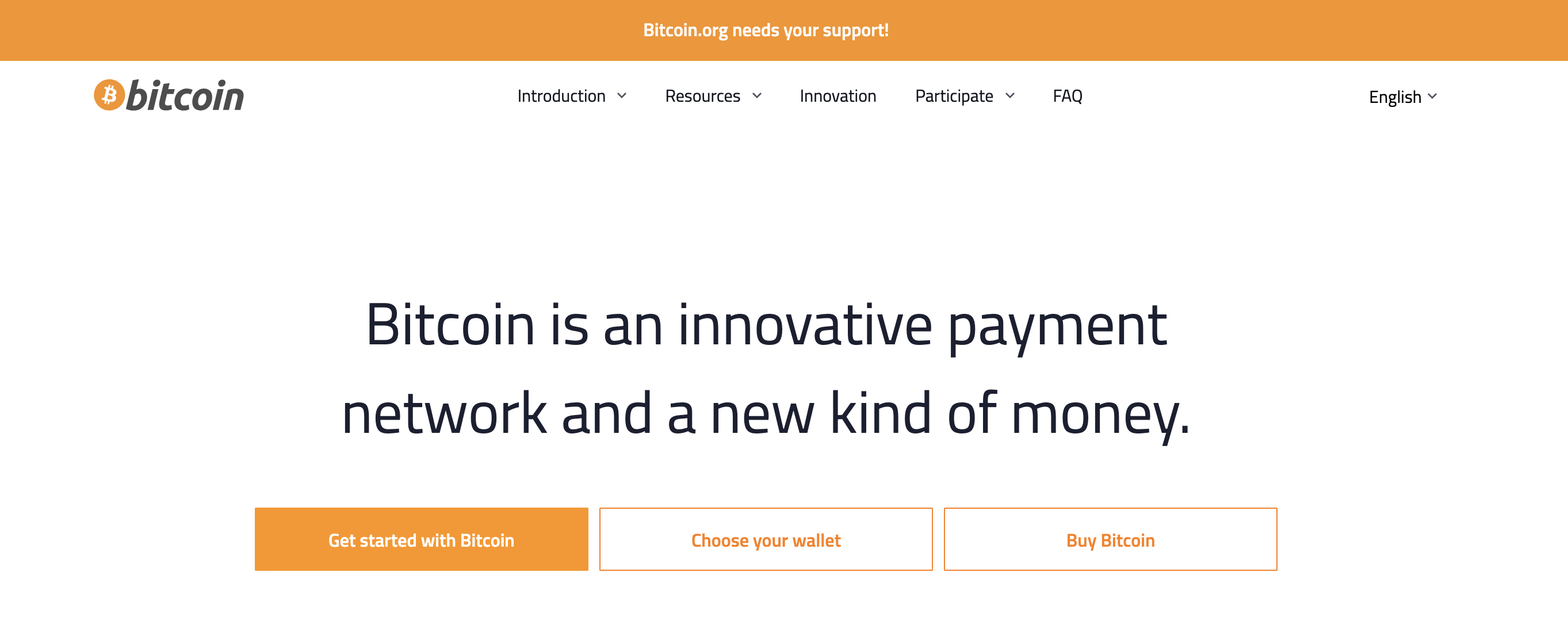
What Is a Cryptocurrency Whitepaper?
- What is a cryptocurrency whitepaper?
- Components of a Cryptocurrency Whitepaper
- Document for Understanding and Evaluating
- Aid for Potential Investors
- Guide for Developers and Users
- Examples of Whitepapers
- Bitcoin Whitepaper: "Bitcoin: A Peer-to-Peer Electronic Cash System"
- Ethereum Whitepaper: "Ethereum: A Next-Generation Smart Contract and Decentralized Application Platform"
- Conclusion

Traditionally, a white paper serves as a detailed report or guide designed to inform readers about specific issues, propose solutions, or highlight technologies. They play an important role in fields ranging from business and marketing to technology development, providing clear, authoritative and comprehensive research on a subject to inform decision-making or educate stakeholders about new developments.
In the case of blockchain and cryptocurrency, the importance of white papers is even greater. They act as a blueprint for new digital currencies, platforms or technologies, describing the philosophical, technical and practical details of an initiative. For many cryptocurrency projects, a whitepaper is not just a document, it is a foundational document that introduces users to the project. The document serves several purposes at once: informing potential users, attracting investors, and preparing for regulatory scrutiny.
What is a cryptocurrency whitepaper?
Cryptocurrency Whitepaper is a basic document that details a blockchain or cryptocurrency project. It contains important information about the technology behind the project, the working mechanisms and the strategic vision. Typically, this document covers everything from the technical architecture and consensus mechanisms to the token economics and governance model, painting a complete picture of the structure and functionality of the project.
It serves as a tool for communicating the vision and goals of the project, articulating not only what the project intends to accomplish, but also how it plans to accomplish it. By detailing technical features, the whitepaper convinces potential investors, developers and users of the viability and uniqueness of the project. It also describes the project's roadmap, offering a timeline of development milestones and future goals, helping to establish transparency and build trust among the community.
Components of a Cryptocurrency Whitepaper
A cryptocurrency whitepaper is a detailed and structured document that explains the various aspects of a blockchain project. Here are the key components typically found in a whitepaper:
- Project Overview: This section delves into the core idea of the project, explaining what it is and how it aims to address specific problems or inefficiencies in the existing system. The project overview should articulate the vision and mission of the initiative, clarifying the unique value proposition and the target market or audience. It sets the stage for readers by highlighting the challenges in the current landscape and how the project's approach is a viable solution.
- Technical Specifications: A critical part of the whitepaper, this section provides an in-depth look at the technology behind the project. It covers the technology stack, architectural design, and the chosen consensus mechanisms. Detailing these elements shows how the project plans to achieve its stated goals technically and operationally. It’s important to explain why certain technological choices were made and how these contribute to the overall efficiency, security, and scalability of the project.
- Tokenomics: Tokenomics involves the economic policies and strategies surrounding the project's token. This includes details on the token's distribution, the total supply, any mechanisms for controlling inflation, and how the tokens are intended to be used within the ecosystem. This section should clearly define the utility of the token and how it integrates with the project’s broader economic dynamics, including incentives for users, investors, and other stakeholders.
- Roadmap: The roadmap outlines the project’s developmental trajectory from inception through various phases of growth and milestones. It should provide a timeline of key events and achievements the project aims to accomplish. This helps to set expectations and demonstrate the project team's commitment to progress and long-term success.
- Team and Partnerships: Finally, a detailed presentation of the project team, advisors, and significant partnerships is crucial. This section should include backgrounds that highlight each member’s expertise and previous accomplishments, showing their capability to drive the project forward. Information on strategic partnerships also adds credibility and shows collaborative potential which can play a significant role in the project's development and adoption.
These components collectively provide a holistic view of a cryptocurrency project, enabling potential investors, users, and partners to make informed decisions about their involvement.
Importance of a Whitepaper
A whitepaper is more than just a formal document; it's the backbone of a cryptocurrency project's communication strategy. Its role in the crypto and blockchain ecosystem cannot be overstated, serving multiple critical functions:
Document for Understanding and Evaluating
A whitepaper provides the first comprehensive look at a cryptocurrency project. It outlines the technological foundation, operational plans, and strategic objectives. By reading a whitepaper, stakeholders get a clear understanding of what the project is about, the problems it aims to solve, and how it plans to do so. This document serves as a benchmark for evaluating the feasibility, innovation, and potential impact of the project. It is the initial reference point for anyone looking to understand the project in depth, from its core functionality to its broader implications in the market.
Aid for Potential Investors
For investors, a whitepaper is an essential tool for due diligence. It offers detailed information on the project’s technology, market potential, competitive landscape, and the roadmap for future development. Investors use this information to assess the risk and potential return on investment. A well-written whitepaper can demonstrate the seriousness and professionalism of the project team, thereby building investor confidence. It also provides transparency, detailing how funds are to be used and what milestones the project aims to achieve, which are crucial factors in investment decisions.
Guide for Developers and Users
Developers look to a whitepaper for technical specifications and architectural insights, which are vital for understanding how to build on or integrate with the project. For developers looking to contribute to the project, the whitepaper offers a detailed guide on the project's framework and underlying codebase.
Similarly, users, particularly those who might adopt the technology or participate in the ecosystem, can use the whitepaper to understand how the project could benefit them or solve specific problems. It explains the user interaction model, the benefits of participation, and how the technology meets user needs.
Examples of Whitepapers
In the realm of cryptocurrency, several whitepapers have become nearly as famous as the projects they represent. These documents have set standards in the industry and offer great examples for anyone looking to understand how a well-crafted whitepaper should look. Here are two pivotal examples:
Bitcoin Whitepaper: "Bitcoin: A Peer-to-Peer Electronic Cash System"

- Author: Satoshi Nakamoto
- Published: 2008
- Overview: The Bitcoin whitepaper is the document that introduced the first blockchain-based cryptocurrency. It outlines a method for using a peer-to-peer network to create a system of electronic transactions without relying on trust. The whitepaper details the process of using a decentralized ledger (blockchain), which solves the double-spending problem to allow for digital currencies to function like cash.
- Impact: This whitepaper not only launched Bitcoin but also laid the foundational technology for all subsequent cryptocurrencies. Its clear, concise explanation of blockchain technology and its benefits for eliminating intermediaries in financial transactions have inspired a multitude of blockchain projects.
Ethereum Whitepaper: "Ethereum: A Next-Generation Smart Contract and Decentralized Application Platform"

- Author: Vitalik Buterin
- Published: 2014
- Overview: The Ethereum whitepaper proposed a new framework for blockchain technology. Unlike Bitcoin, which was designed primarily as a digital currency, Ethereum introduces a platform for executing smart contracts and building decentralized applications (DApps). The whitepaper discusses the limitations of Bitcoin’s scripting language and outlines a new approach with a Turing-complete language that allows developers to create more complex smart contracts.
- Impact: Ethereum has expanded the scope of blockchain applications, moving beyond simple transactions to enable a wide array of decentralized services and applications, from finance to gaming. It has become a core infrastructure for the decentralized web, often referred to as Web3.
Conclusion
Whitepapers are crucial in the cryptocurrency ecosystem, serving as the foundational documents that introduce and detail new projects. They are vital for anyone considering involvement, whether as an investor, developer, or user, offering a comprehensive overview of a project's technology, goals, and roadmap.
